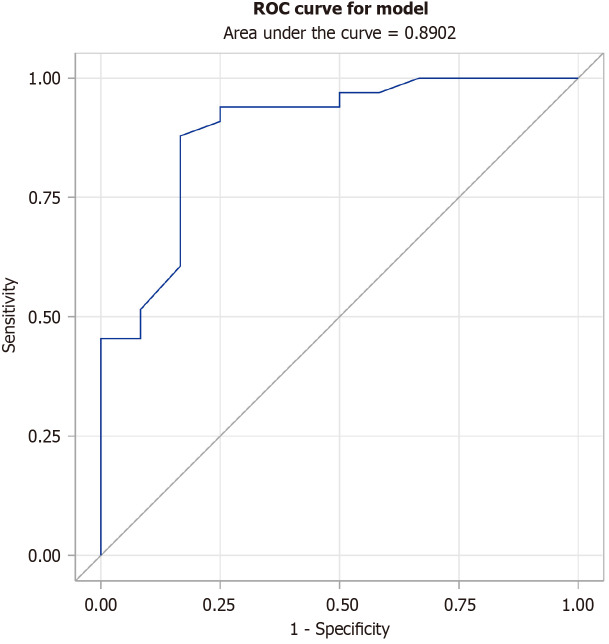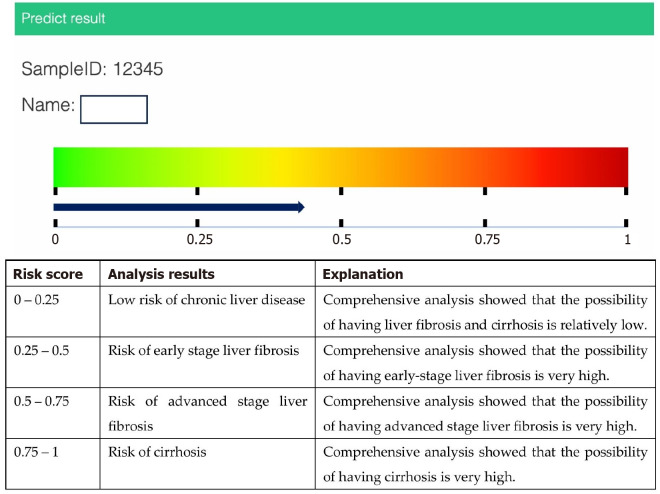Diagnostic performance of Liver FibraChek Dx© , a blood-based test for the non-invasive detection of liver cirrhosis and cancer.
IF 2.5
Q2 GASTROENTEROLOGY & HEPATOLOGY
Fernando Siguencia, Michitaka Matsuda, Vijay Pandyarajan, Sunao Tanaka, Steven M Smith, Catherine Bresee, Ekihiro Seki, Charles J Rosser, Hideki Furuya
下载PDF
{"title":"Diagnostic performance of Liver FibraChek Dx<sup>©</sup>, a blood-based test for the non-invasive detection of liver cirrhosis and cancer.","authors":"Fernando Siguencia, Michitaka Matsuda, Vijay Pandyarajan, Sunao Tanaka, Steven M Smith, Catherine Bresee, Ekihiro Seki, Charles J Rosser, Hideki Furuya","doi":"10.4254/wjh.v17.i6.106481","DOIUrl":null,"url":null,"abstract":"<p><strong>Background: </strong>Metabolic dysfunction-associated steatotic liver disease (MASLD), hepatic fibrosis, and cirrhosis are major risk factors for hepatocellular carcinoma (HCC), yet current blood-based diagnostic assays lack sufficient accuracy for routine clinical use. Identifying a non-invasive molecular signature that accurately detects liver disease could improve early diagnosis and monitoring. We hypothesized that the Liver FibraChek Dx<sup>©</sup> serum assay could discriminate MASLD and HCC from healthy controls using a multiplex biomarker-based algorithm.</p><p><strong>Aim: </strong>To evaluate the diagnostic performance of the Liver FibraChek Dx<sup>©</sup> assay for detecting MASLD and HCC.</p><p><strong>Methods: </strong>This was a prospective, single-center study conducted in a United States tertiary care setting. Serum samples were collected from 45 participants (14 MASLD, 19 HCC, 12 healthy controls) with liver histology confirmed by biopsy. The Liver FibraChek Dx<sup>©</sup> algorithm integrates weighted values of aspartate aminotransferase, alanine aminotransferase, taurocholic acid, L-tyrosine, platelet count, and patient age to generate a risk score. Wilcoxon rank sum tests were used to assess associations with histologic diagnosis, and receiver operating characteristic (ROC) curves quantified diagnostic performance.</p><p><strong>Results: </strong>Liver FibraChek Dx<sup>©</sup> risk scores were significantly elevated in MASLD and HCC compared to controls (median: 6.92 ± 3.86 <i>vs</i> 3.61 ± 1.67, <i>P</i> < 0.001). The area under the ROC curve was 0.890 (95%CI: 0.776-1.000) for distinguishing diseased from healthy individuals. Sensitivity was 93.9%, specificity 75.0%, positive predictive value 91.1%, negative predictive value 81.8%, and overall accuracy 88.9%.</p><p><strong>Conclusion: </strong>The Liver FibraChek Dx<sup>©</sup> assay accurately detects liver disease and shows promise as a non-invasive tool for diagnosing and monitoring MASLD and HCC.</p>","PeriodicalId":23687,"journal":{"name":"World Journal of Hepatology","volume":"17 6","pages":"106481"},"PeriodicalIF":2.5000,"publicationDate":"2025-06-27","publicationTypes":"Journal Article","fieldsOfStudy":null,"isOpenAccess":false,"openAccessPdf":"https://www.ncbi.nlm.nih.gov/pmc/articles/PMC12210174/pdf/","citationCount":"0","resultStr":null,"platform":"Semanticscholar","paperid":null,"PeriodicalName":"World Journal of Hepatology","FirstCategoryId":"1085","ListUrlMain":"https://doi.org/10.4254/wjh.v17.i6.106481","RegionNum":0,"RegionCategory":null,"ArticlePicture":[],"TitleCN":null,"AbstractTextCN":null,"PMCID":null,"EPubDate":"","PubModel":"","JCR":"Q2","JCRName":"GASTROENTEROLOGY & HEPATOLOGY","Score":null,"Total":0}
引用次数: 0
引用
批量引用
Abstract
Background: Metabolic dysfunction-associated steatotic liver disease (MASLD), hepatic fibrosis, and cirrhosis are major risk factors for hepatocellular carcinoma (HCC), yet current blood-based diagnostic assays lack sufficient accuracy for routine clinical use. Identifying a non-invasive molecular signature that accurately detects liver disease could improve early diagnosis and monitoring. We hypothesized that the Liver FibraChek Dx© serum assay could discriminate MASLD and HCC from healthy controls using a multiplex biomarker-based algorithm.
Aim: To evaluate the diagnostic performance of the Liver FibraChek Dx© assay for detecting MASLD and HCC.
Methods: This was a prospective, single-center study conducted in a United States tertiary care setting. Serum samples were collected from 45 participants (14 MASLD, 19 HCC, 12 healthy controls) with liver histology confirmed by biopsy. The Liver FibraChek Dx© algorithm integrates weighted values of aspartate aminotransferase, alanine aminotransferase, taurocholic acid, L-tyrosine, platelet count, and patient age to generate a risk score. Wilcoxon rank sum tests were used to assess associations with histologic diagnosis, and receiver operating characteristic (ROC) curves quantified diagnostic performance.
Results: Liver FibraChek Dx© risk scores were significantly elevated in MASLD and HCC compared to controls (median: 6.92 ± 3.86 vs 3.61 ± 1.67, P < 0.001). The area under the ROC curve was 0.890 (95%CI: 0.776-1.000) for distinguishing diseased from healthy individuals. Sensitivity was 93.9%, specificity 75.0%, positive predictive value 91.1%, negative predictive value 81.8%, and overall accuracy 88.9%.
Conclusion: The Liver FibraChek Dx© assay accurately detects liver disease and shows promise as a non-invasive tool for diagnosing and monitoring MASLD and HCC.
肝FibraChek Dx©的诊断性能,这是一种基于血液的无创检测肝硬化和肝癌的方法。
背景:代谢功能障碍相关的脂肪变性肝病(MASLD)、肝纤维化和肝硬化是肝细胞癌(HCC)的主要危险因素,但目前基于血液的诊断方法在常规临床应用中缺乏足够的准确性。确定一种非侵入性的分子标记,可以准确地检测肝脏疾病,从而改善早期诊断和监测。我们假设肝脏FibraChek Dx©血清检测可以使用基于多重生物标志物的算法从健康对照中区分MASLD和HCC。目的:评价FibraChek Dx©法检测MASLD和HCC的诊断价值。方法:这是一项在美国三级医疗机构进行的前瞻性单中心研究。45名参与者(MASLD 14名,HCC 19名,健康对照12名)的血清样本经肝组织活检证实。肝脏FibraChek Dx©算法综合了天冬氨酸转氨酶、丙氨酸转氨酶、牛磺胆酸、l -酪氨酸、血小板计数和患者年龄的加权值,生成风险评分。Wilcoxon秩和检验用于评估与组织学诊断的相关性,受试者工作特征(ROC)曲线量化诊断表现。结果:与对照组相比,MASLD和HCC患者的肝脏FibraChek Dx©风险评分显著升高(中位数:6.92±3.86 vs 3.61±1.67,P < 0.001)。ROC曲线下面积为0.890 (95%CI: 0.776 ~ 1.000)。敏感性93.9%,特异性75.0%,阳性预测值91.1%,阴性预测值81.8%,总体准确率88.9%。结论:肝FibraChek Dx©检测能准确检测肝脏疾病,有望成为一种诊断和监测MASLD和HCC的无创工具。
本文章由计算机程序翻译,如有差异,请以英文原文为准。



 求助内容:
求助内容: 应助结果提醒方式:
应助结果提醒方式:


